On the Oudh Trail in Assam
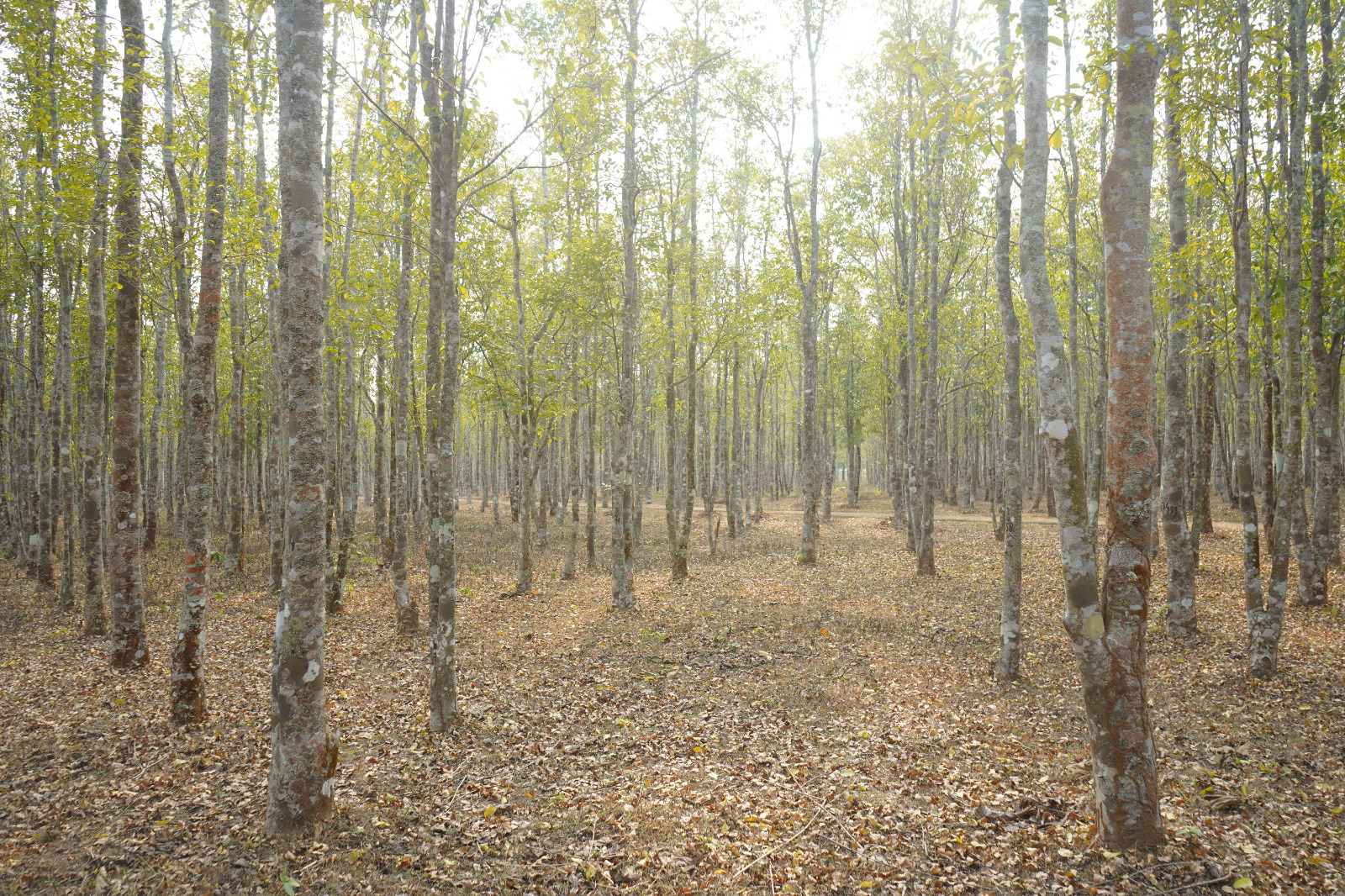
Beejliving travelled to Hojai in Assam to discover one of the most precious perfumery ingredients in the world, oudh, with Ajmal Perfumes
We’re making our way to the outskirts of Hojai, a small town in Assam, to a plantation of agarwood trees in pursuit of black gold, or oudh, one of the most expensive perfume ingredients in the world. I’m on a farm-to-fragrance oudh trail with Ajmal Perfumes. The perfume house was established in 1951 by the late Haji Ajmal Ali, and is now helmed by his grandson, Abdulla Ajmal who has recently taken over the Ajmal Group, the global conglomerate. Present in over 50 countries and with 300 stores, its traces its roots back to Hojai, Assam.
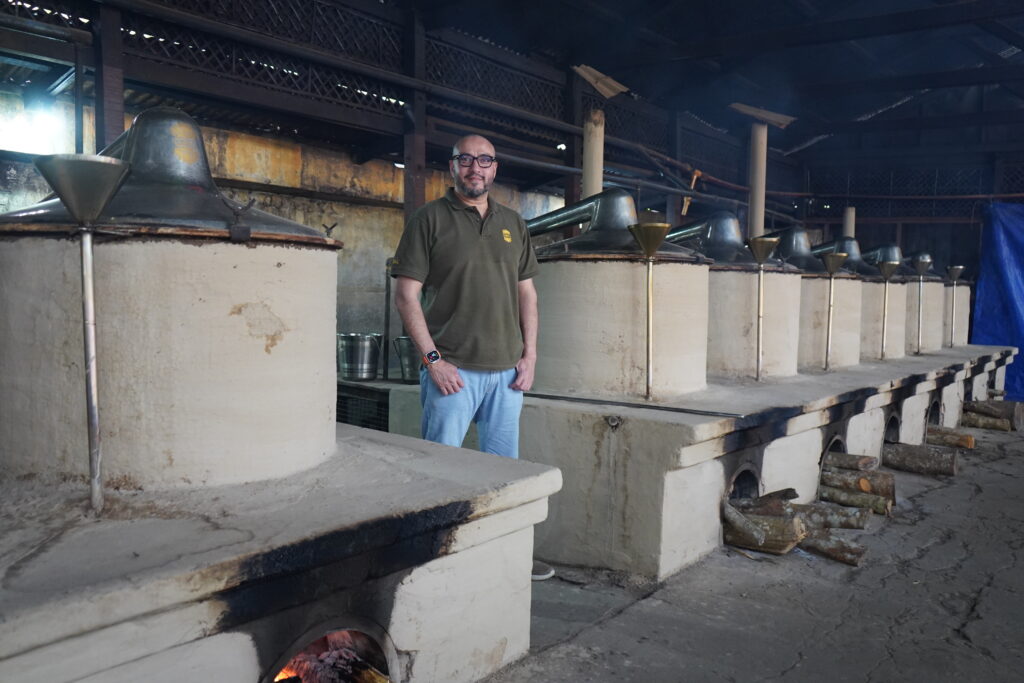
The oudh trail has brought us to the plantation. We stand amongst slim, agarwood trees, aquilaria malaccensis, their fallen, yellowing leaves crunching under our feet. Normally, a healthy agarwood tree is white or pale yellow. Sometimes, a tree can get injured, for instance by physical stressors, such as a bird peck; chemical stressors, namely stress inducing chemicals or biological stressors, through microbes. At some point, a fungus takes over the injury. We gape at a tree Abdulla shows us for a tell-tale sign. There’s a puncture on the bark where the fungus is spreading, and the detritus from the perforation has piled into a heap at its base. To protect itself from the aggressive fungus, the tree creates an enzyme to destroy it, an oil-like-enzyme spreading through the tree. The result is an oleoresin, a mixture of oil and resin, the exquisite oudh.
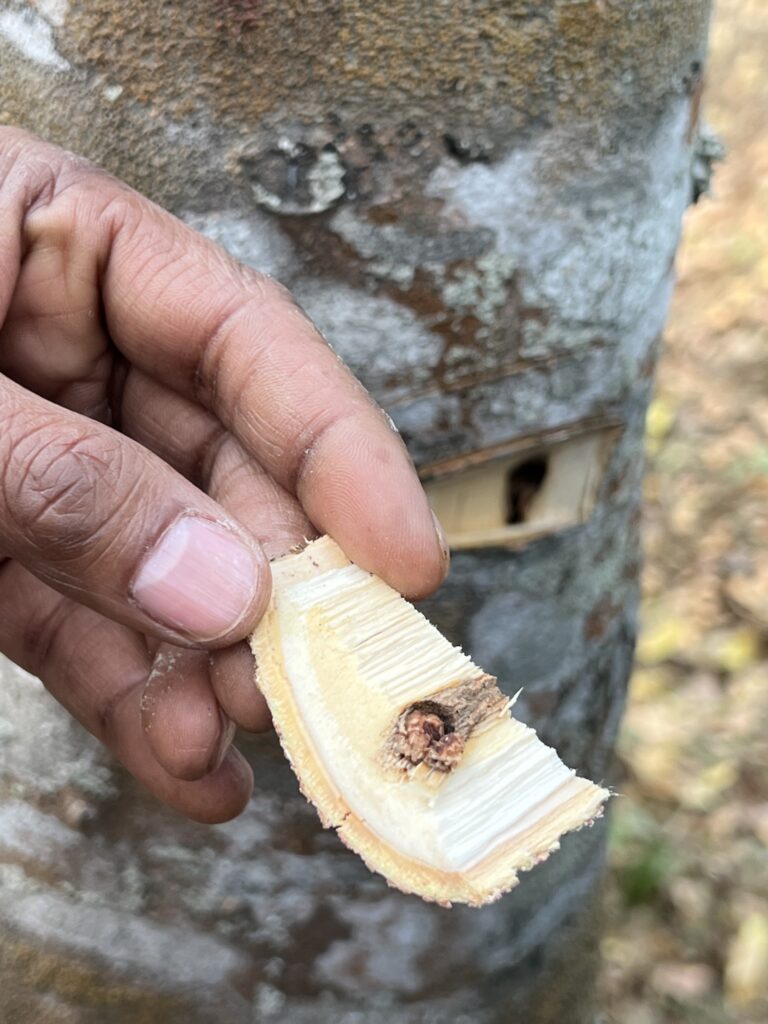
In the wild, oudh is produced in less than two percent of the trees, and it starts developing once the trees are at least eight years to a decade old. For the best quality oudh, it is said one needs to wait for at least half a century. And agarwood trees grow in just a clutch of South East Asian nations, with Assam in India producing what’s said to be the best quality of oudh in the world.
Identifying trees in the wild which contained black gold was a skill possessed by Haji Ajmal Ali, recalls Abdulla, of his grandfather’s Midas touch, who had also started afforestation in the region way back in 1979. He could identify the handful of wild agarwood trees which contained this oleoresin. “Yeh taqdeer walo ka business tha,” says Abdulla, meaning, only those blessed with good fortune could thrive in the business in the past.
Things are different now. This plantation, owned by the perfume house, is a part of the Convention on International Trade in Endangered Species of Wild Fauna and Flora, a membership to ensure that the international trade in oudh does not threaten the survival of the agarwood trees. At the plantation, the formation of oudh is initiated by a technique of inoculation patented by Ajmal, thus eliminating the uncertainty of which wild grown agarwood trees’ innards contain the oleoresin, and also their subsequent felling, all in pursuit of the elusive oudh.
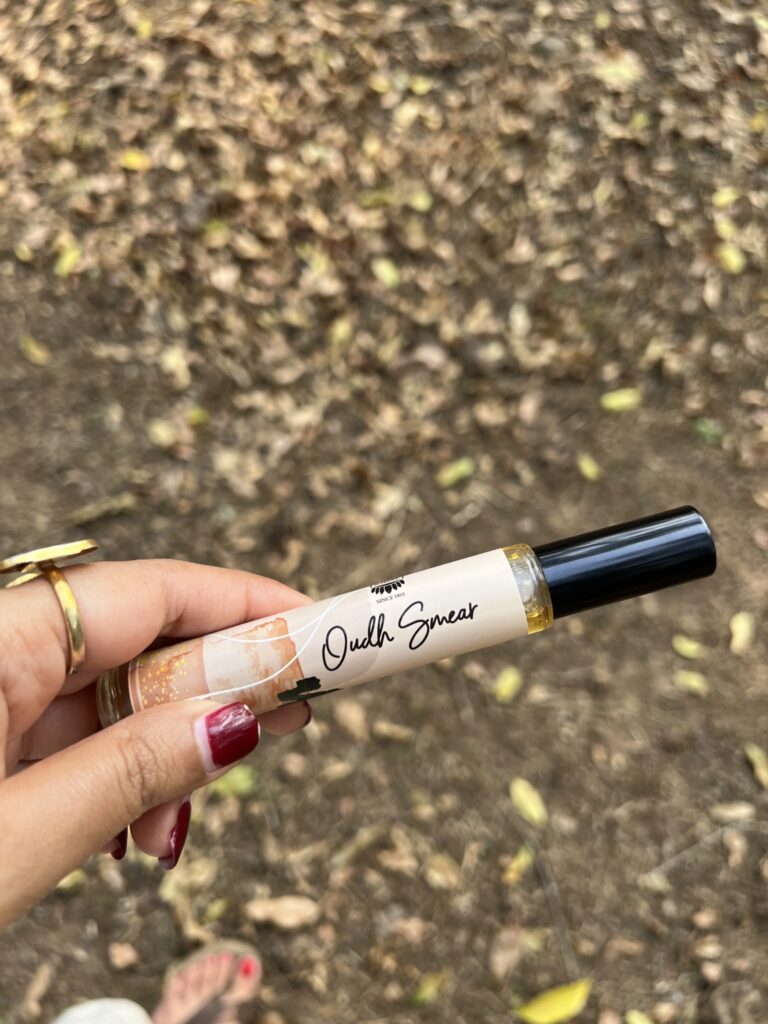
The processing of Oudh
Earlier that day we had visited an oudh processing center and distillation unit. In a big airy hall, seated on the floor and surrounded by their tools and mounds of wood were the skilled workmen, performing tasks meticulously. Many have been working at their trade for at least 10 years.
Processing freshly cut agarwood with oleoresin into incense chips takes around a month. One week is spent on each of the four steps in the process. It begins by whittling away the white wood by hand to expose the resin, to finally grading the oudh incense sticks for quality. We walk past the piles of wood sticks, and finally stop at the grading section, where oudh incense sticks are being segregated as per quality. The darker the incense chips, also known as Mubakhar, the higher grade it is.
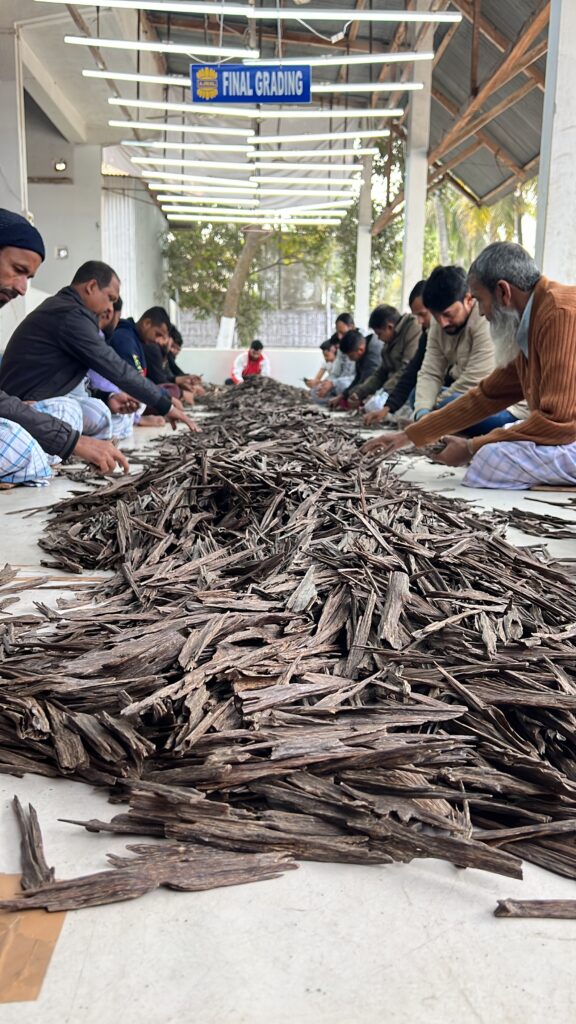
The remainder wood pieces are taken for distillation, to create Dehn Al Oudh (translating into fat of the wood in Arabic) or oudh oil. The hydro-distillation still takes place in traditional deghs or stills. The oil is distilled several times. Post distillation, the traditional method of separating the oudh oil from water is a magical process performed with great artistry. We gather around Zakir Bhai, who has been working at Ajmal’s distillation unit for over quarter a century. He sweeps his hand on the surface of the water. Tiny droplets of oil cling to his hand and he transfers every precious droplet into the boat shaped container. After scraping every drop into it, he gently blows over the oil to separate any water, and then pours the oil into a bottle. It is incredible to watch, a facet of India’s living heritage.
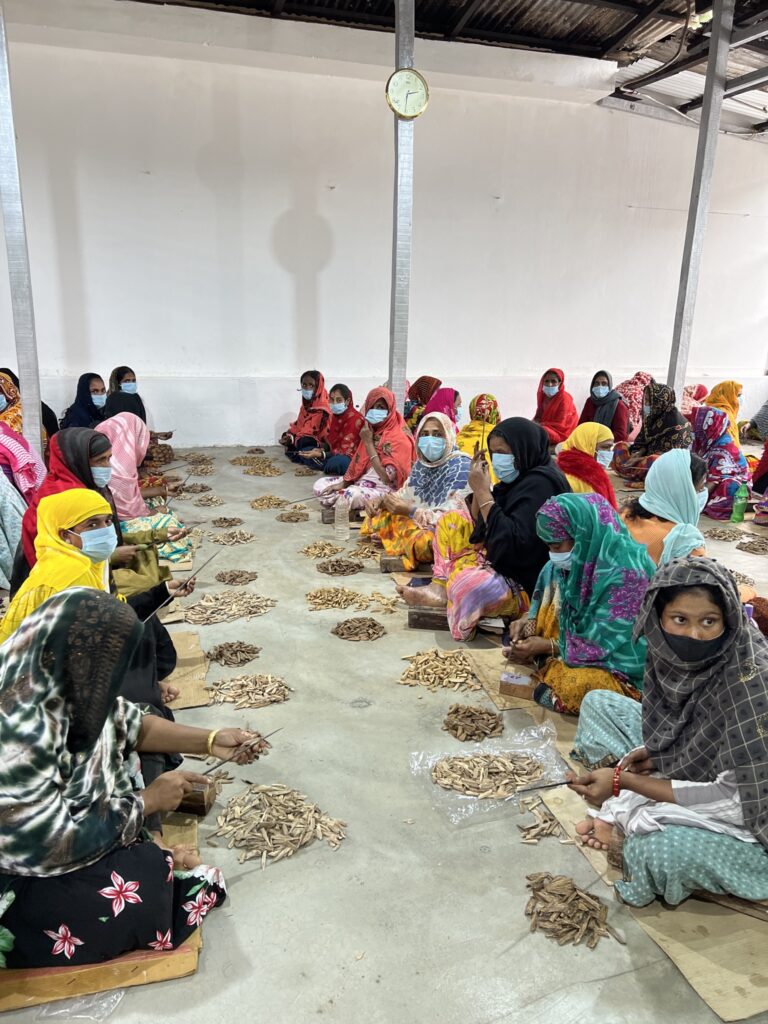
The end of the journey
As this sensorial journey comes to an end, over a bonfire in the garden of the Ajmal residence, our home during this trip, Abdulla regales us with tales of this fascinating woody, earthy and smoky ingredient. The Japanese burnt oudh incense and the Chinese made coffins from this resinous heartwood. The French King Louis the XIV was so partial to oudh that he washed his clothes in it. In a modern-day fairy tale, a customer sent over a kilo of oudh incense sticks surrounded by red roses to his companion across the oceans. In the Middle East, oudh incense is used to perfume abayas and kandhuras by burning a piece on on charcoal. You can also perfume your clothes or hair. it’s a smoky, musty scent that lingers long after the piece crumbles to ashes.
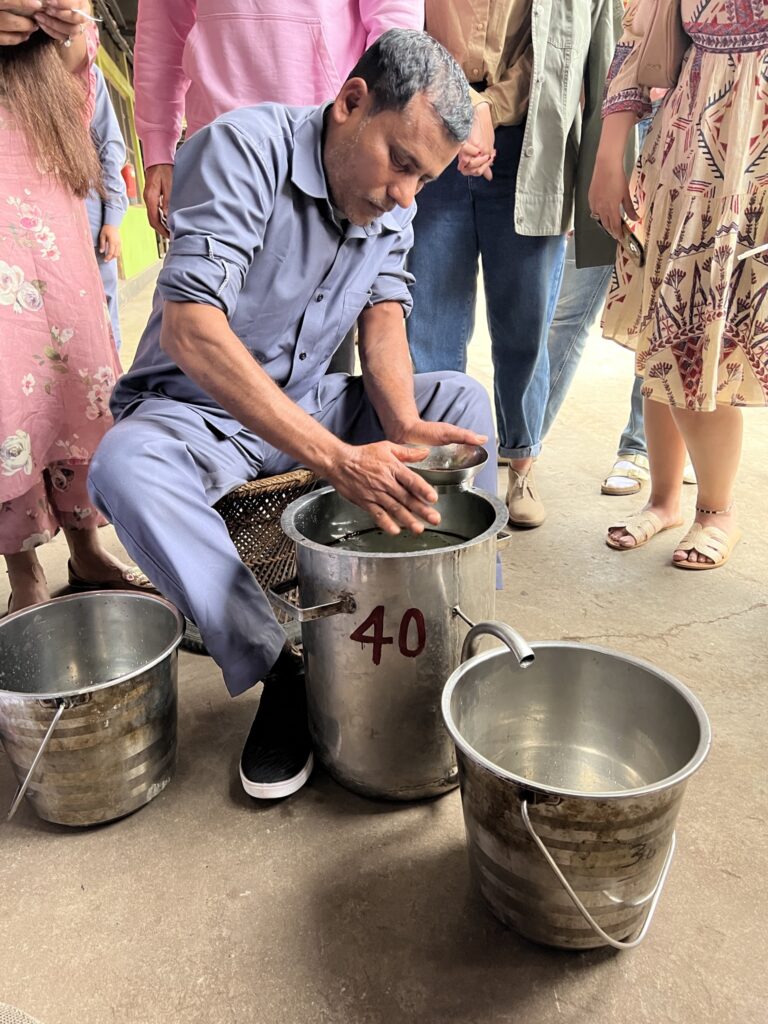
Abdulla likens the oudh trade to mining diamonds, and similarly, oudh can be a commodity or a luxury, depending on the grade. A question he’s often asked is that the business of diamond cutting and polishing is significantly different from what it used to be, having embraced technology at every step of the way, but the processing of oudh continues the same way as it was centuries ago. While Ajmal has several patents across the globe and has a state-of-the-art perfume making units, they’ve left the traditional method of producing oudh untouched. They tried modernizing the procedure, but tests showed disappointing results. “It increases the yield, but affects the olfactive,” says Abdulla, of bringing in modern machinery and replacing the traditional methods of processing and distillation that they’ve been following overtime. But as India modernizes and aspirations evolve, he’s sanguine about the fact that one day, change will be inevitable.
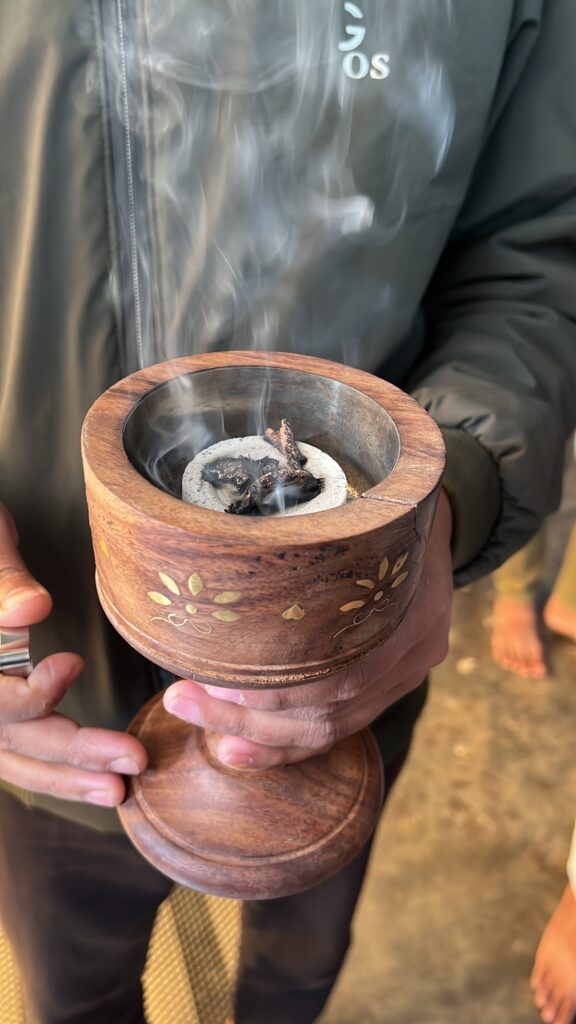
As we get ready to leave for home, we’re gifted an incandescent bottle of perfume, an elixir that evolves with our pheromones. Beside it lies an oudh incense stick-perfume’s greatest ingredient that has held on to its fragrance and stayed true to its traditions, despite the passage of time. I take a last whiff of the burning resin-warm, sweet and balsamic, an olfactory memory that stays with me for a long, long time.


